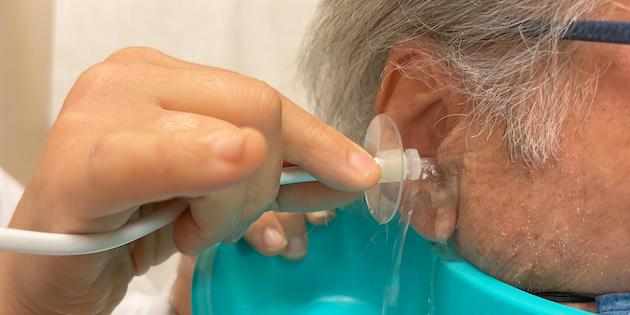Earwax services must continue under state cover, academics urge
Important findings from recent research by University of Manchester audiologists underline a pressing need for Britain's National Health Service to maintain earwax removal services.

Withdrawal of these services and increased waiting times for them in General Practitioner (GP) surgeries and health centres has been a growing concern in recent times. This new research, published in the Journal of General Practice, throws up data that strengthens current calls for earwax removal to be an attentively provided staple under the NHS, perhaps ideally by Groups of practices collaborating as primary care networks, taking advantage of the portable nature of contemporary wax removal equipment.
Increasing scarcity of earwax removal service leads to campaign
The UK’s National Institute for Health and Care Excellence (NICE) recommends that earwax removal services should be available in primary care. However, earwax services are so scarce – even non-existent – in some locations that user groups led by the Royal National Institute for Deaf People (RNID) is campaigning for wider access in primary care, points out Manchester University.
And a 2022 RNID report called Access blocked: the impact of cutting NHS ear wax removal services, described how many people are being forced to go private and pay £50 to £100 every time they need the ear wax to be removed.
More than two million people in the UK are needing ear wax removal, say the research team led by Professor Kevin Munro at The University of Manchester and National Institute for Health and Care Research (NIHR) Manchester Biomedical Research Centre (BRC).
Care home residents with dementia experience serious earwax difficulties
The study surveyed 500 adults who used NHS ear wax removal services and found the most common and troubling symptom of blocked ears was hearing difficulty. It found that nine out of ten of those surveyed said hearing difficulty was at least moderately bothersome, six out of ten reported to be very/extremely bothersome. And after removal of the ear wax, more than eight out of ten people reported an immediate improvement.
But ear wax is a particular problem in care homes, the researchers found, affecting up to 44% of residents with dementia.
“If anyone tries simulating the effect of impacted wax by walking around with their fingers plugging their ears for a few days, they’ll soon realise that it is a serious issue,” said Professor Munro.
“The recommendations from the National Institute for Health and Care Excellence (NICE) could not be clearer- NHS ear wax removal services should be provided in the community,” continued the research lead.
“There are multiple reasons why GP surgeries are ceasing to provide ear wax removal services. The traditional method of syringing ears is no longer recommended but there are newer and safer methods for flushing wax out of the ear,” he added.
“There is also a misunderstanding that using ear drops to soften the wax will be enough to resolve the problem but there is little evidence to support this claim. Once the wax has been softened, it needs to be flushed out of the ear or vacuumed up, neither of which can be done at home without expertise.
Source:University of Manchester


